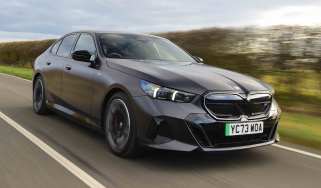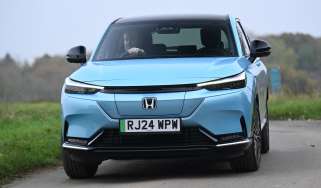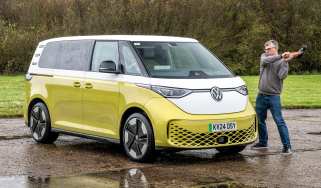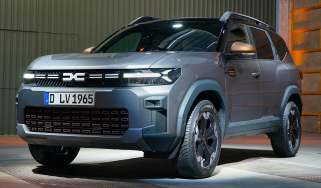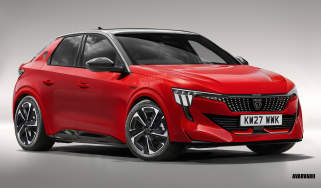Ford Capri (Mk3, 1978-1987) icon review: a star on and off the screen
Ford’s European ‘pony car’ was a sales hit for nearly 20 years. We take the coupe for a spin
If you were asked which car was advertised as “the difference between driving and just motoring” when it arrived in March 1978, you’d probably be stuck. But if you were asked which model was sold using the strapline “the car you always promised yourself”, you’d probably not have to think too hard. Yet both slogans belonged to the same vehicle, albeit the famous one to the Mk1 Ford Capri of 1969, and the more obscure one to the third-generation version that was launched in 1978.
The Capri burst onto the scene at the end of the sixties, as Europe’s answer to the Ford Mustang ‘pony car’ phenomenon that had been sweeping the US for five years. Launched in 1964, the Mustang became the fastest-selling car in history. Ford hoped to shift 100,000 examples in the first year, but it hit that target in the first four months. One million were sold in less than two years, and Ford really wanted to repeat this success in Europe, which would get its own pony car.
While Ford wouldn’t enjoy the same sales success with the Capri as the Mustang, it didn’t take long for its European pony car to gain a cult following. Designed by Philip T Clark, who had been involved in the Mustang’s styling, and initially intended to be called Colt (until Mitsubishi intervened), Ford’s European pony car was launched with 1.3, 1.6 or 2.0-litre four-cylinder engines, and at the top of the pile was a 144bhp 3.0-litre V6. The Mk1 would morph into the Mk2 in 1974, complete with a hatchback in place of the previous boot, but here we’re driving the final iteration, the Mk3, launched in 1978.
The number of changes between the Mk2 and Mk3 Capris was relatively small, because the car’s development took less than a year. Its roots lay in a concept shown at the 1976 Geneva Motor Show called the Modular Aerodynamic, which was a cross between a Mk2 Capri and a Vauxhall DroopSnoot. The following April, a development programme began using the project name Carla, and by March 1978 the outcome was unveiled at the Geneva Motor Show: the Capri Mk3.
More reviews
In-depth reviews
Road tests
Once again there was no shortage of engine options, ranging from a weedy (57bhp) 1,298cc four-cylinder to the much more tasty 2,994cc V6 that had been seen in the original Capri. But the car that overshadowed all of these models was the 2.8i, which arrived in 1981 to oust the 3.0-litre models. Developed by Ford’s Special Vehicle Operations, it’s the 2.8i which most Capri fans have promised themselves. Well, that is if they can’t find (or stretch to) one of the 100 or so turbocharged Tickford Capris that were made.
At first the 2.8i was fitted with a four-speed gearbox, but by January 1983 an extra cog had been added. By the end of 1984 this halo model had morphed into the 2.8 Injection Special (2.8i S), complete with half-leather trim, a limited-slip differential and RS spoked alloy wheels. The only options offered were metallic paint (including various two-tone schemes) and an extended warranty for up to three years, with the standard guarantee offering 12 months of cover.
Registered in 1987, more than seven months after production had ended, the Capri 2.8i S pictured here is one of the last examples to roll out of Ford’s Cologne factory in Germany. Its £10,599 price tag clearly put off potential buyers, so no doubt this car would have been discounted when new to help find it an owner. This Capri is part of the collection at the Great British Car Journey in Derby, and it’s in wonderfully original condition. Until the 2.8i arrived in 1981, the fastest variation on the Capri theme was powered by Ford’s 3.0-litre ‘Essex’ V6 in carburetted form. The new ‘Cologne’ engine ushered in fuel injection, so it was much cleaner, but it couldn’t muster the low-down grunt of its forebear, even though it had more power.
With Capris now routinely selling for upwards of £40,000, and even £50,000 in some cases, you could be forgiven for thinking that this is a car that sets some sort of standard in terms of the driving experience, but nothing could be further from the truth. Using a modified Ford Cortina Mk2 floorpan and many of that car’s oily bits, the Capri’s antiquated mechanicals mean that if you want to use all of the 160bhp that’s available, you need to look well ahead and have fast reflexes.
On paper, the Capri sounds luxurious for the time, with its Recaro seats, internally adjustable driver’s door mirror, 13-inch alloys, tinted glass and reasonably comprehensive instrumentation. The half a dozen gauges include one for engine oil pressure, an ammeter and a rev counter, and Ford also threw in a manually operated steel sliding sunroof for a bit of extra luxury.
But as soon as you climb into the Capri’s gloriously period Recaro bucket seats, it’s clear that this isn’t a car that feels especially luxurious or sporty from the driving seat. Having said that, you sit fairly low with your legs outstretched, so the semi-reclining driving position feels sporty, and those seats are wonderfully figure-hugging; bad news if you’re an adult trying to fold yourself into the cramped rear seats, though. The three-spoke steering wheel also feels suitably sporting, but the approximate fit of the trim panels lets the side down. Welcome to the world of the eighties mass-market car. Another thing that gives away the Capri’s age is the decent all-round visibility; there’s no need for parking sensors or cameras here.
Twist the key and the injected V6 fires up immediately, before settling into a smooth and rorty idle, courtesy of the twin exhaust pipes that sprout from either side of the car. With 60,000 miles on the clock, there’s plenty of life left in this eighties coupe, but the driving experience isn’t quite what it’s cracked up to be. The clutch is fierce, so it’s easy to stall the engine despite it having a decent amount of low-end shove. Select first and we’re off the line; the five-speed transmission is slick, if not especially precise.
What’s rather less slick is the suspension set-up, with cart springs at the back, while the servo-assisted brakes lack feel and bite. All those scenes in The Professionals TV series of Bodie and Doyle going sideways in their Capris wouldn’t have taken much to set up; a six-cylinder Capri has a decent helping of muscle, but not a lot of grip and even less stopping power, which is why you have to plan ahead, especially because the car has no shortage of pace. With a top speed of 130mph and 0-60mph possible in a smidge under eight seconds, the Capri is no slouch. However, the long ratios blunt in-gear acceleration, although it makes cruising in the Ford coupe much more relaxed, with the V6 engine doing little more than ticking over at motorway speeds.
Despite the Capri’s antiquated brakes and suspension, Brits still loved it in the second half of the eighties, even though the model was well past its sell-by date. By 1984 the car was in production solely for the UK, with only right-hand-drive cars built after this date. Buyers could pick between the 1.6 or 2.0 Laser and the 2.8i Special along with the Tickford Capri.
December 19, 1986 marked the end of an era, because that’s when the last Capri was built. As with all of the last 1,038 Capris, it was a Brooklands 280 edition, which meant it had leather trim, metallic green paintwork and 15-inch spoked alloy wheels. By this point 1,886,647 examples had been produced, and neither the Probe nor the Cougar that tried to fill the boots of the Capri ever captured the imagination in the way that the original European pony car had done.
Many thanks to Richard Usher and his team at the Great British Car Journey, for preparing the Capri and allowing us to drive it. You can find out more about what’s in the collection by visiting greatbritishcarjourney.com.
Interested in buying one?
Capris used to be cheap and specialists were plentiful, but despite the car’s cult following, specialists are now few and far between, and values have skyrocketed. Prices start at £8,000 for a four-cylinder Capri Mk3 that’s usable but scruffy, and rise to £40k-£50k or more for mint sporting Mk1s, Brooklands and Tickfords.
You can buy a decent 2.8i for £12k-£15k; just make sure that it’s not a tarted-up heap. Parts availability is generally poor when it comes to panels and trim, and some engine parts are scarce, although much of the rest is easy enough to source.
The bodywork borders on the crude, so it’s easy to check everywhere for corrosion and poor-quality crash repairs. Gearboxes are strong (there were even some autos) and so are differentials. While the brakes and suspension may be tired, these can be overhauled cheaply and easily. As always, your best bet is to join the club for info and parts, and you’ll find it at capriclub.co.uk.
| Model: | Ford Capri Mk3 |
| Production dates: | 1978-1987 |
| Price then: | Price then: £10,995 (1987) |
| Price now: | £12,000-£20,000 |
| Power/torque: | 160bhp/220Nm |
| Transmission: | Four/five-speed manual, rear-wheel drive |
| 0-62mph: | 7.8 seconds |
| Top speed: | 130mph |





